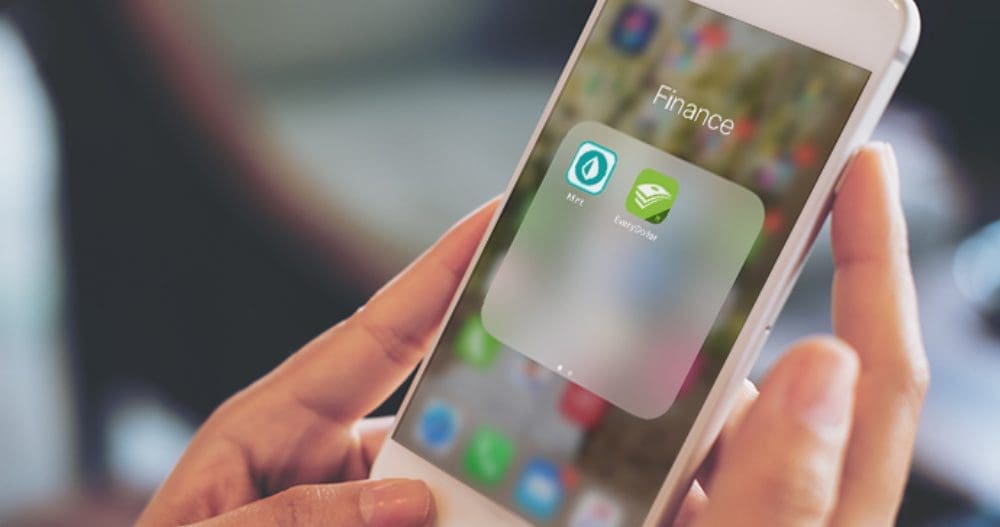Categories


Budgets are not a one-size-fits-all solution. Like your lifestyle, budgets come in different shapes and sizes, and there are some budgeting methods you’ll like better than others. If you know your way around a smartphone and other mobile devices, you might prefer to create and track your budget with an app. No matter where you are, this handy option lets you access your budget with just the swipe of a finger.
Mobile budgeting apps are gaining popularity at lightning speed. They make it easy to track your spending, set saving goals, tackle debt, and keep up with your monthly bills. All in one place. Gone are the days of poring over a legal pad and crunching numbers on a calculator. (Unless, of course, you prefer that old school method.)
Mint vs. EveryDollar: A Practical Comparison
While Mint and EveryDollar share a similar purpose, each offers unique strengths, and of course, some distinctive drawbacks. Depending on your goals, preferences, and style, either one could be the right choice for you.
Mint Overview
With a ten-year track record and more than 15 million users, it’s clear that Mint has been able to stand the test of time. Powered by Intuit, this app is simple, straightforward, and free. If you are a budgeting newbie, Mint offers helpful features that make it easy to get started.
- Account summary: Mint simplifies budgeting by allowing you to link to all of your accounts. When you sign-up with Mint (which is fast and easy), you will enter your checking, savings, and credit card information so that you can see all of your accounts in one place. Once you’re set up, the overview home page displays all your accounts on one screen. And if that’s not convenient enough, the app also tracks (and categorizes!) your transactions in real-time.
- Budgeting: If you’ve never followed a budget before and don’t know where to begin, Mint has your back. The app’s budget feature not only suggests specific categories like auto and home expenses, but it also recommends monthly amounts based on your financial profile and recent spending patterns. It allows you to track your spending patterns weekly, monthly, and annually to give you a sense of your progress. Additionally, Mint lets you see how your financial choices might be compromising your savings goals, which may help you make real-time adjustments to your spending habits.
- Bill tracking: Keeping up with due dates not your strong suit? No worries. Mint will do that for you. While Mint no longer offers a bill pay option (which is a drawback for some users), it does track your due dates and account balances. It can also send you alerts and reminders so you don’t miss payments, incur late fees, or damage your credit score.
- Free credit monitoring: Speaking of credit reports, it’s easy to forget about yours. The truth is, we all have one whether we monitor it or not. If you want to make sure your credit doesn’t hurt your financial profile, consistent monitoring is key. Mint includes a feature that tracks your credit report through Equifax, which makes it simple to track any changes that could impact your score. And while some credit monitoring services charge a monthly fee, Mint includes this feature for free!
- Goal setting: As you gain control of your budget, you will be able to set personal goals for areas such as savings, paying down debts, and investing surplus income. Mint gives you tools for setting and monitoring all of these goals. It also tracks your progress and lets you see how you measure up to others in the marketplace.
Mint is incredibly easy, helpful, and user-friendly, but it’s not perfect. Some users have found the app to be inconsistent in syncing account information and tracking transactions. And when problems do occur, their free email support is not always responsive. Turn around time is slow, and issues are not always resolved. But even if you’re not sure about using Mint, hey — it’s free. Since Mint is so easy to set up and maintain, you might as well try it out for a few months and see if it’s the right budgeting solution for you.
EveryDollar Overview
Are you a Dave Ramsey fan? Are you ready to take budgeting to the next level and tackle some big financial goals? If so, you’re going to love EveryDollar. Released in 2015, the EveryDollar app not only walks you step-by-step through the budgeting process, it also coaches you through Ramsey’s signature Baby Steps and helps you to take control of your financial future in an assertive, intentional way.
Note: The EveryDollar app offers a free version and a “Plus” version that will cost you $129 per year. We’ll give you the lowdown on both.
- Account summary: You can use EveryDollar to see all your accounts and keep up with their transactions. However, if you are using the free version, you will have to enter data manually, which, quite frankly, is not very fun or efficient. But if you’re looking for a silver lining, that process might make you more aware of your spending habits — which is always a good thing. If you pay for the Plus version, the app handles the data entry automatically, much like Mint.
- Budgeting: The EveryDollar budget feature suggests preset categories so that you don’t overlook certain items and expenses. You can also personalize your budget by adding categories of your own. The screen set-up makes entering the numbers quick and easy. EveryDollar follows the zero-based budgeting system, which subscribes to the idea that your income minus your savings and expenses should always equal zero. In other words, you account for every dollar — and we do mean every dollar — of income, no matter what you do with it.
- Tracking your bills: Good news: Just like Mint, EveryDollar allows you to set due dates for your various payments and receive reminders, so you never pay bills late again. Bad news: If you want that feature, you’ll have to pay for it by upgrading to EveryDollar Plus.
- Credit Score Monitoring: Unfortunately, EveryDollar doesn’t offer this feature.
- Goal setting: If you know Dave Ramsey, you know he is big on paying off debt and building positive momentum toward a more secure financial future. The ultimate goal is to give you stability and freedom, as well as position you to be able to help others. To that end, EveryDollar helps you set savings goals and strategize ways to pay down your debts. In addition, the app supports you as you work through the Baby Steps. It’s worth noting that EveryDollar does not help you track investments. (But if you’re following Ramsey’s plan, you won’t need to worry about that until at least the fourth step anyway.)
The Main Takeaways
Both Mint and EveryDollar are fantastic apps for learning how to establish and live by a budget. Both offer a user-friendly interface and easy-to-navigate features. You can set and achieve some impressive financial goals with either app. Mint isn’t always on top of customer support, and EveryDollar is going to make you pay if you want features like bill paying, automatic tracking of accounts, and over-the-phone customer support. Oh, we should also mention that both apps will sneak in some ads for other services here and there. But you probably expected that, right?
Regardless of which budgeting app you choose, Spero is ready to partner with you and help you establish a sustainable budget and set some attainable financial goals. Whether you use one of these apps or another budgeting option like the My Spending Tool, which is integrated into the Spero Mobile app, getting started is the most important part. If you’re not sure where to start or want to learn more about how Spero can help you achieve budgeting success, give us a call or visit us at one of our convenient branch offices.









